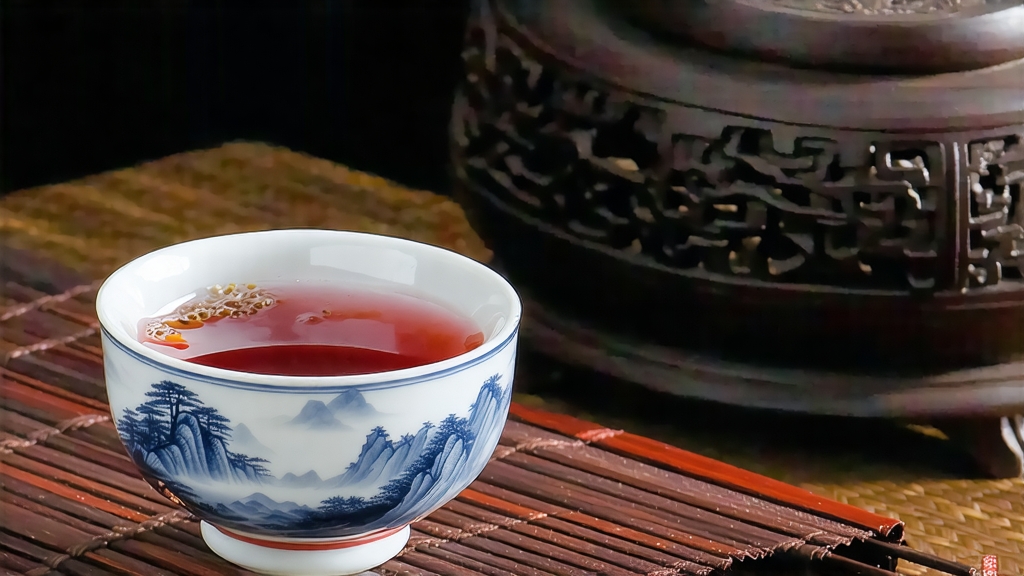
Long before English breakfast blends and Victorian drawing rooms, a small-leafed camellia variety growing on the rocky flanks of the Wuyi massif in China’s Fujian province was about to become the world’s first intentionally smoked black tea. Locals call it Zheng Shan Xiao Zhong—“proper-mountain small sort”—yet outside China it is celebrated under the phonetic memory of Fuzhou traders: Lapsang Souchong. Its story begins in the late Ming dynasty, around 1605, when passing armies forced tea farmers to hastily dry freshly picked leaves over open pine fires so that the crop could be rushed away from marauders. The accidental marriage of resinous smoke and fully oxidized leaf proved irresistible to the Dutch merchants who first carried it to Europe, and within decades “Bohea” (Wuyi) teas were auctioned in Amsterdam and London at prices higher than silver. Thus Lapsang Souchong became the primogenitor of every black tea now drunk across five continents.
True Lapsang Souchong is still produced only inside the 600–1 200 m core zone of the Wuyi National Nature Reserve, a UNESCO dual heritage site where Jurassic-era cliffs squeeze the gorge of the Tongmu River. The cultivar of choice is Xiao Ye Zhong (“small-leaf sort”), a slow-growing shrub that clings to weathered tuff soils, drawing minerals that translate into a natural sweetness rarely found in larger-leaf black teas. Two newer offshoots have emerged since the 2005 revival of traditional craft: Jin Jun Mei, made solely from tiny spring buds to create a honeyed, smoke-free liquor, and Wild Lapsang, picked from feral trees on inaccessible ledges and lightly smoked with aged pine. Purists, however, insist that only the classic leaf-and-bud pluck processed in Tongmu’s three tiny villages—Guadun, Miaowan, and Tongmu Guan—deserves the name Zheng Shan.
The making of Lapsang Souchong is a choreography of fire, leaf, and time that has changed little in four centuries. Picking occurs only between Qingming and Grain Rain, when morning mists keep the leaf supple. One bud and the first two leaves are collected in shallow bamboo sieves; any heavier pluck would blunt the tea’s hallmark elegance. Withering happens in the second story of wooden loft houses where pine logs smolder beneath slatted bamboo trays. For eight to ten hours the leaf loses moisture while absorbing volatile pinewood compounds—guaiacol and syringol—that later manifest as the tea’s signature smoky note. Once the leaves become as supple as glove leather, they are rolled on rattan mats: first a light kneading to rupture cell walls, then a firmer twist that encourages enzymatic oxidation. The rolled leaf is next heaped into deep bamboo baskets and left under wet cloths for three hours, turning every twenty minutes; temperature is judged by the experienced palm of the master, who must keep the pile below 30 °C to avoid sourness. When the leaf has turned a uniform copper-brown and releases a sweet apple-like aroma, it is given the act that defines it—smoke roasting. Fresh pine wood is sawn into 40 cm lengths, lit, and immediately smothered to produce a cool, aromatic smoke that curls through layers of leaf spread on sieves. This step is repeated up to seven times over the next twelve hours, each cycle lasting only three minutes so that the leaf dries without baking. Finally, the tea is sorted by hand: yellow stalks and broken pieces are removed, while intact strips are gently warmed one last time over dying embers, then rested for a month so that smoke and leaf marry into a seamless whole.
To brew Lapsang Souchong in the Western gongfu style, begin with 5 g of leaf—about one heaping tablespoon—for a 150 ml porcelain gaiwan. Bring freshly drawn water to a rolling boil, then pause five seconds so that the torrent calms; pouring at 98 °C extracts the full spectrum of aromatics without scalding the delicate tips. Rinse the leaf for three seconds and discard: this awakens the tea and washes away surface smoke. The first infusion should last five seconds; subsequent steeps add three seconds each. A properly made Tongmu Lapsang will yield eight clear infusions, the liquor moving from bright copper to deep mahogany. If you prefer a European method, use